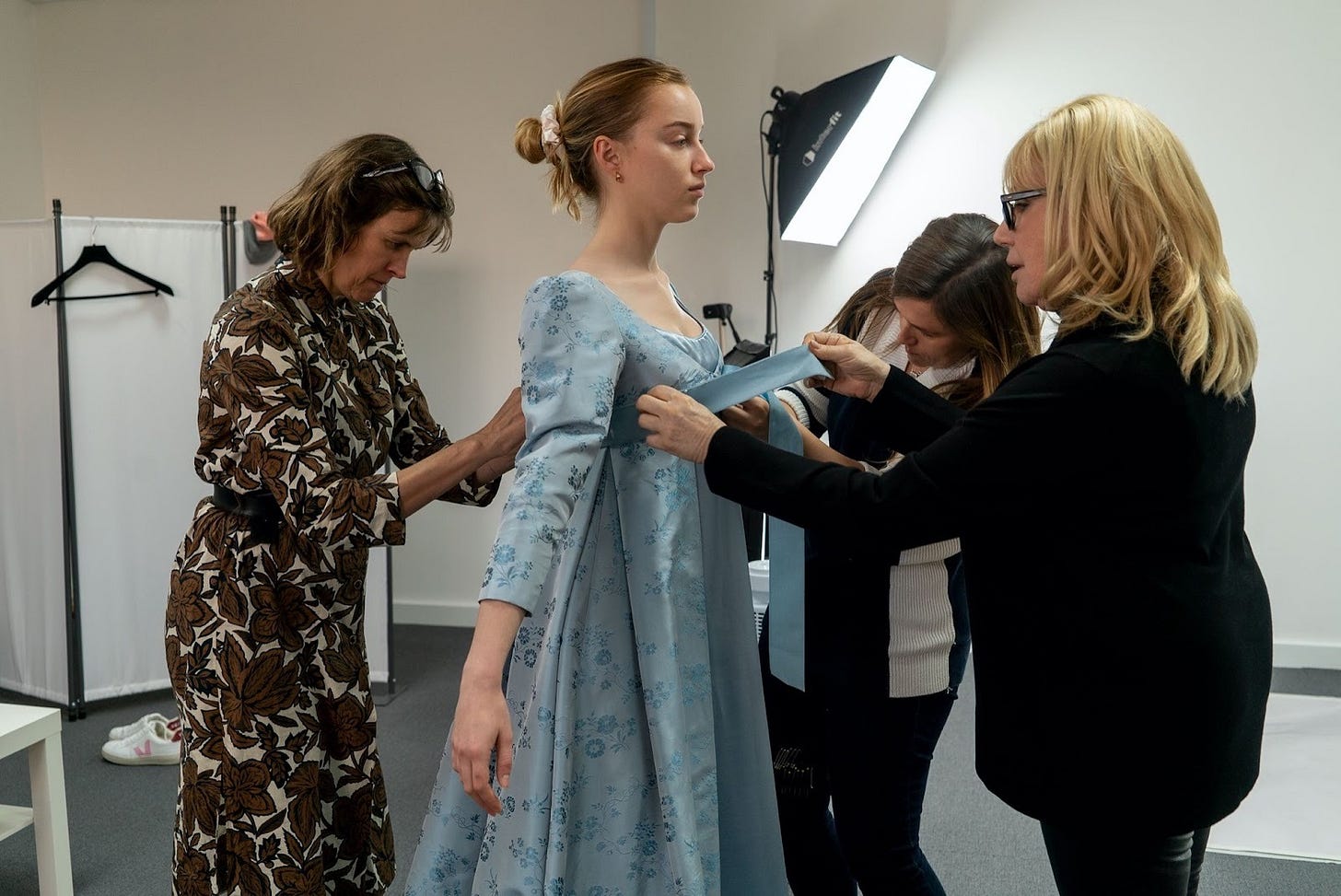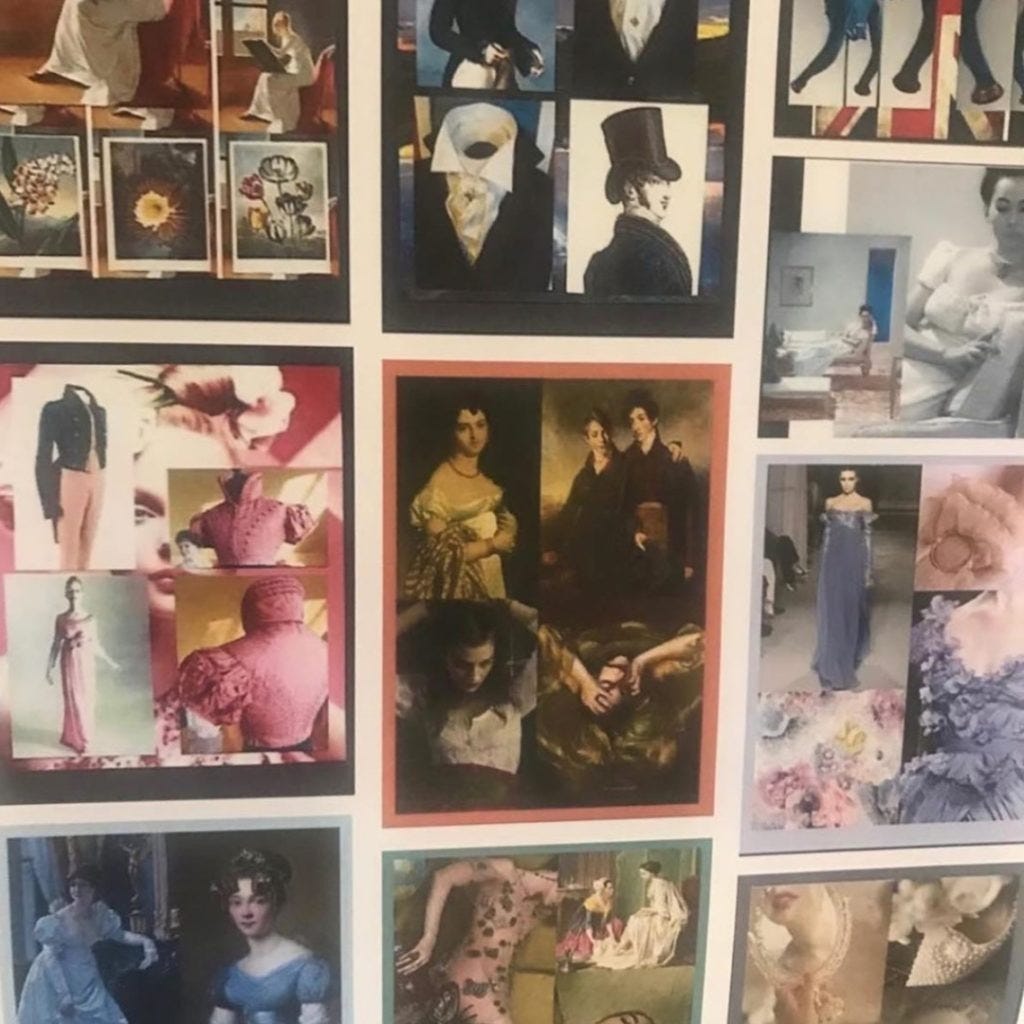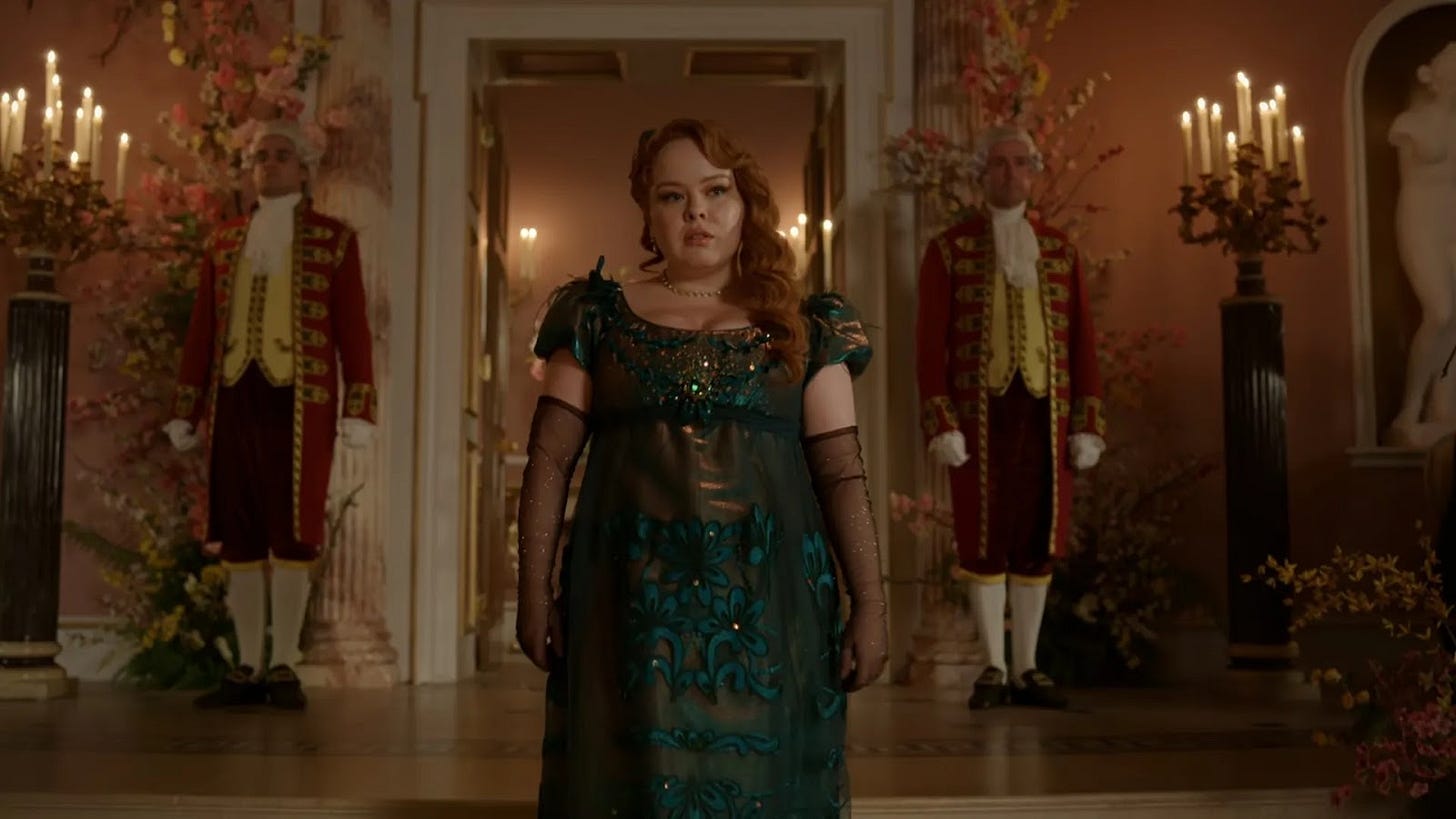Reimagining Historical Fashion: The Bridgerton Effect
How "Bridgerton" Brings History to Life with Bold Designs, Modern Twists, and Intricate Details
Happy Friday!
This week, we have a fantastic piece from our student guest writer, Olivia Zimmerman. Olivia takes us behind the scenes of the hit Netflix show “Bridgerton”, exploring how the designers mix Regency-era styles with a modern twist to create the show's dreamy, fantastical world.
Her insights offer a glimpse into how these costumes do more than dress the characters we are so fond of— they tell their stories in ways you might not expect.
Happy reading,
Amarissa
The Netflix original series Bridgerton redefines Regency-era fashion by blending tradition with modern aesthetics. When you imagine fashion in the 1800s, you might picture boring ensembles without character or personality. However, part of what makes Bridgerton so exciting is the fresh, unique take on Regency styles.
Despite taking place in the 1800s, Bridgerton is not meant to be historically accurate. Instead, the show uses historical fiction to create a fantastical, romantic, and idealized version of the period. These costuming choices are essential because they help the audience instantly understand the characters and their roles in society.
The design team characterizes the cast through the visual language of storytelling through the differences in color, fabric, and styling. The choice to shift from traditional styles allows for creative freedom. Therefore, Bridgertons’ historical inaccuracies are necessary for creating this fantasy world and the characters living in it.
The Inspiration
The costume designers of Bridgerton began with traditional Regency-era silhouettes, then infused them with modern and imaginative elements to bring the show's fantasy world to life. Designer Ellen Mirojnick experimented with layering fabrics to create uniquely fluid gowns, then added color, adornments, and glitter. These fantastical elements breathe life into the characters and allow the costumes to be a visual storytelling tool.
Mirojnick drew inspiration from different eras, including the 1950s and 1960s, and the Christian Dior Designer of Dreams exhibition. By combining Regency elegance with contemporary styles, Mirojnick created a visual story that embodied the characters while celebrating an assortment of cultural and historical influences.
The Bridgertons
The Bridgerton family is often depicted wearing a specific shade of blue, known as “Bridgerton blue” to fans. Inspired by Regency Era fine china, this pale blue symbolizes the family's social status and is frequently seen on their garments and in their home. The soft powdery blue is also a nod to the family's calmness and security. Through the use of color and costuming, the audience can easily recognize the family’s high social standing and wealth without it needing to be said.
With the focus of Season 1 on Daphne Bridgerton, we get to see her dainty pastel wardrobe, often accented by floral embroidery. Daphne's gowns feature classic regency silhouettes, with high waistlines under the bust, low necklines, long straight skirts, and tulle sleeves. Daphne's delicate and light costumes represent her innocence and naivety as a young debutante. After marrying the Duke of Hastings, Daphne's wardrobe evolves to darker purples. This change highlights her growth as a character. Designer Sophie Canale used color to represent character changes in age and personality.
The Featheringtons
The Featherington family is characterized by their tackiness and social unawareness, which is reflected in their campy costumes. They are often seen wearing bright colors, loud patterns, and over-the-top embellishments. These bold designs deviate from the subtlety of the Regency Era. While the silhouettes of the family are consistent with the time, the choices to illustrate the family as gaudy and flashy are deliberate and necessary for the family's storyline.
Penelope is often seen in yellow, a popular Regency-era color for young women. However, tired of fading into the background, in Season 3 she begins developing her own style, straying away from the bright citrus tones forced by her mother. Instead, she starts wearing darker, more sultry gowns as she searches for a suitor, emphasizing her growing independence. Costume designer John Glaser took inspiration from Hollywood's Golden Age for Penelope's glow-up, making her hair more modern and her gowns more fitted. This visual distinction allows the audience to understand Penelope’s change narratively, and subconsciously feel it through visual cues.
Queen Charlotte
Inspired by Charlotte of Mecklenburg-Strelitz, Queen Charlotte's style is true to the period, with corsets, cinched waists, wide hoop skirts, and large hair. High-class women of this time typically changed styles as they got older, shifting towards flowy high-waist gowns inspired by Greek Goddesses. However, similar to the real Charlotte, the Queen was stuck in the past and continued dressing the same throughout her life, considering her unfashionable at the time for not changing with the trends.

Despite the Queen's costumes having historical inspiration, the designers still found ways to modernize her. An example of this is her iconic and over-the-top moving swan wig. This design choice is significant because it is extravagant in a way that the audience understands. In reality, royal members at this time would use things like intricate lace and woven silver and gold clothing to distinguish themselves and their role in society. Additionally, some laws prevented commoners from wearing pieces exclusive to royalty. However, among all of the elaborate costumes in Bridgerton, these details likely wouldn't translate to a modern audience, so the costume designers went in a borderline campy direction to differentiate the Queen and visually emphasize her royal status.
The Sharmas
In Season 2 we’re introduced to the Sharma family, with a unique fashion perspective influenced by their Indian heritage, challenging traditional Regency-era norms.. Costume designer Sophie Canale found inspiration from Indian fashion and jewelry for the Sharma family's costumes. The family's style is categorized by rich jewel tones, beadwork, and gold jewelry. Canale mixes these cultural elements with Regency-era silhouettes. She also wanted the costumes to feel relatable to the people watching at home, using trendy elements like flower hair clips.
These costuming choices shift the Eurocentric vision of the Regency era, bringing diversity into a period often portrayed as exclusively white. This redefines what Regency characters can look like and pushes the boundaries of historical perceptions.
The Sharma family costumes also remind viewers that historical accuracy isn’t always the priority in storytelling. Instead, it’s about creating a world where everyone feels like they belong. Everyone deserves to be part of the fairytale fantasy, and this is a great way of making people feel seen, while also experimenting with blending cultural elements.
Contributing edits by our Summer ‘24 Student Writing Program editor , with final oversight by Amarissa.
Today’s Writer…
Olivia is a participant in Fashion Talk's Summer 2024 Student Writing Program. Aligned with our mission to uplift emerging voices in the fashion industry, we’re excited to share her fresh and insightful perspective with our community.
Get to know her here.
connect with us: IG → pinterest → twitter → bluesky














